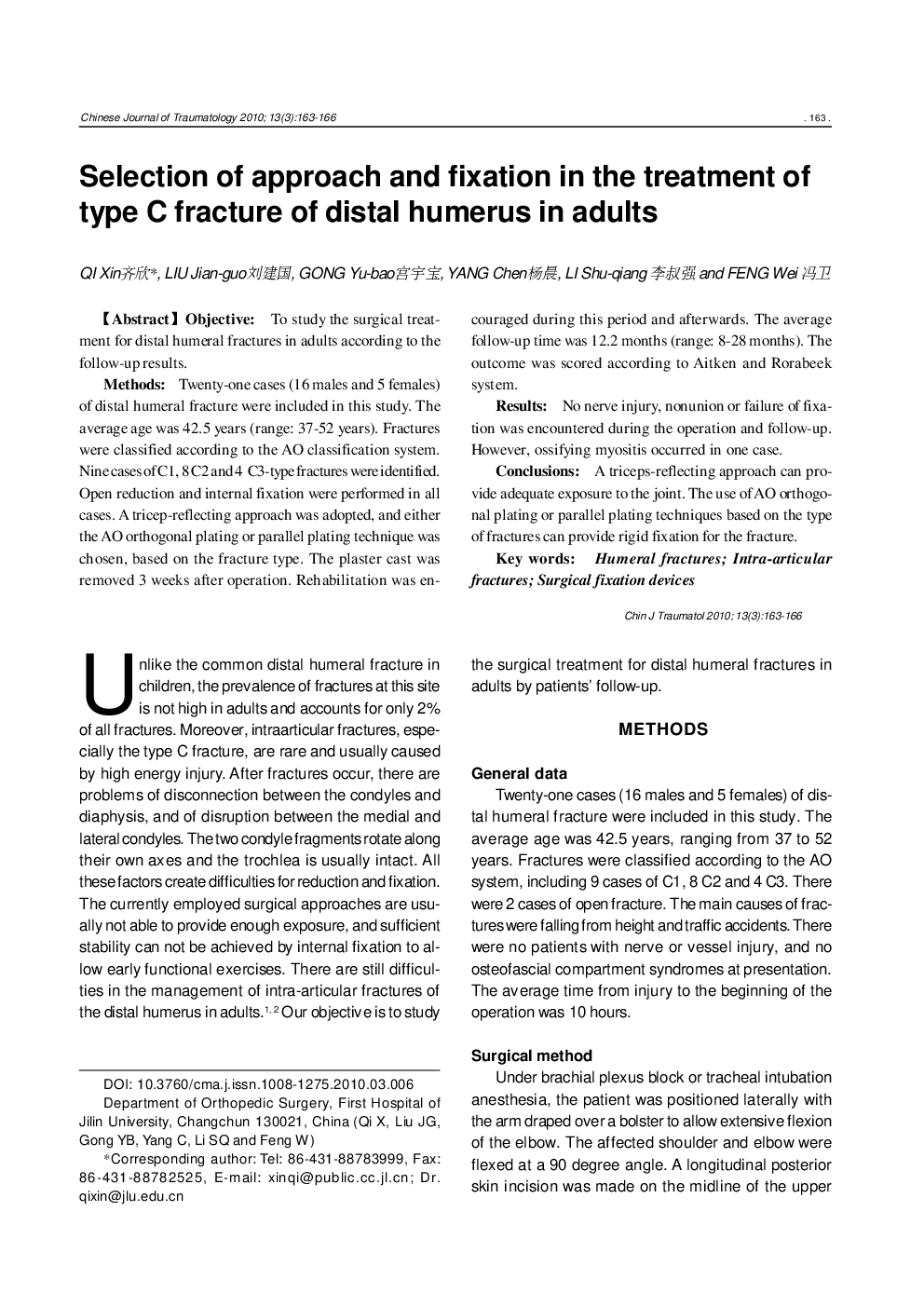| Article ID | Journal | Published Year | Pages | File Type |
|---|---|---|---|---|
| 3107753 | Chinese Journal of Traumatology | 2010 | 4 Pages |
ObjectiveTo study the surgical treatment for distal humeral fractures in adults according to the follow-up results.MethodsTwenty-one cases (16 males and 5 females) of distal humeral fracture were included in this study. The average age was 42.5 years (range: 37–52 years). Fractures were classified according to the AO classification system. Nine cases of C1, 8 C2 and 4 C3-type fractures were identified. Open reduction and internal fixation were performed in all cases. A tricep-reflecting approach was adopted, and either the AO orthogonal plating or parallel plating technique was chosen, based on the fracture type. The plaster cast was removed 3 weeks after operation. Rehabilitation was encouraged during this period and afterwards. The average follow-up time was 12.2 months (range: 8–28 months). The outcome was scored according to Aitken and Rorabeek system.ResultsNo nerve injury, nonunion or failure of fixation was encountered during the operation and follow-up. However, ossifying myositis occurred in one case.ConclusionA triceps-reflecting approach can provide adequate exposure to the j oint. The us e of AO orthogonal plating or parallel plating techniques based on the type of fractures can provide rigid fixation for the fracture.
